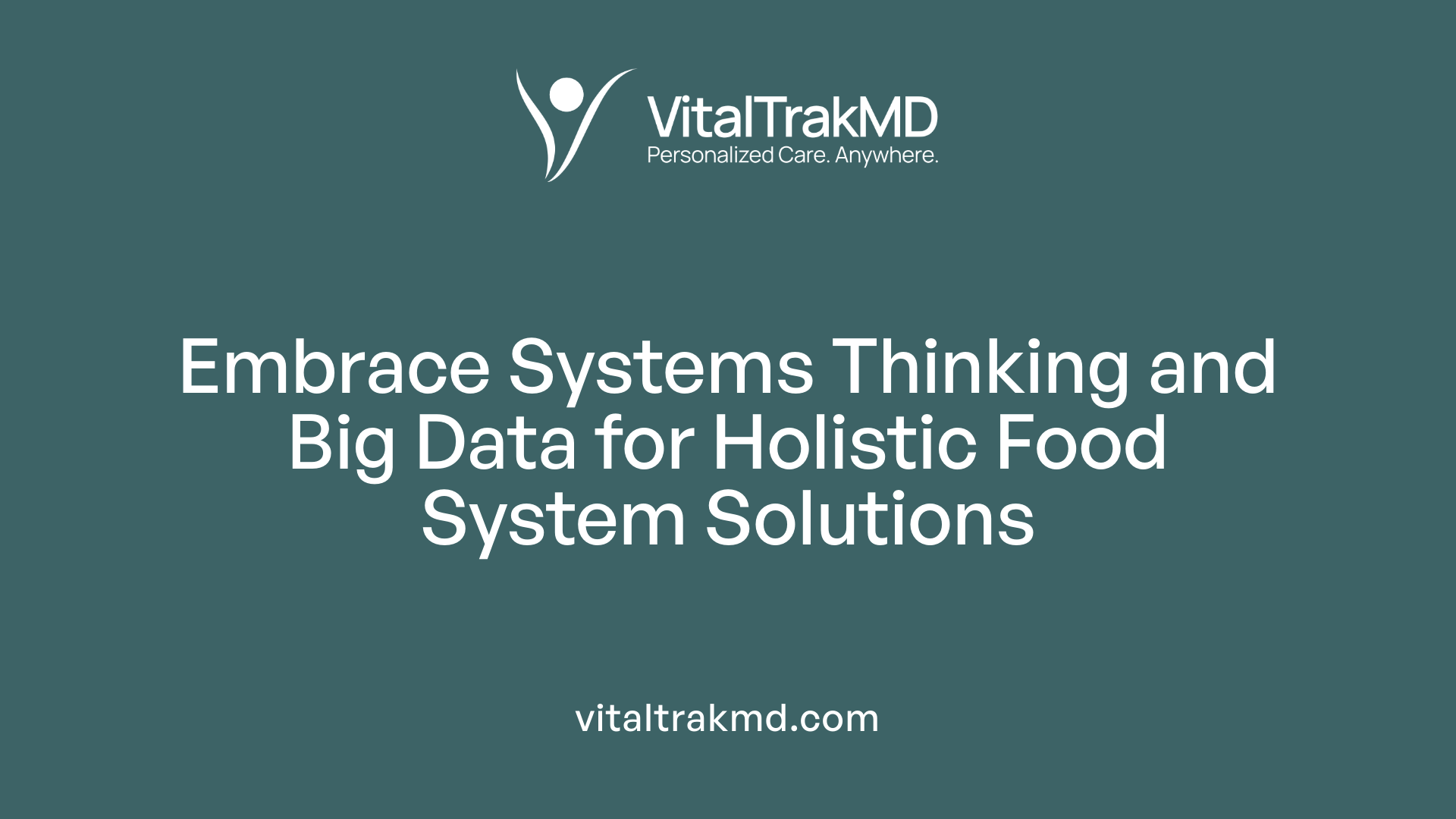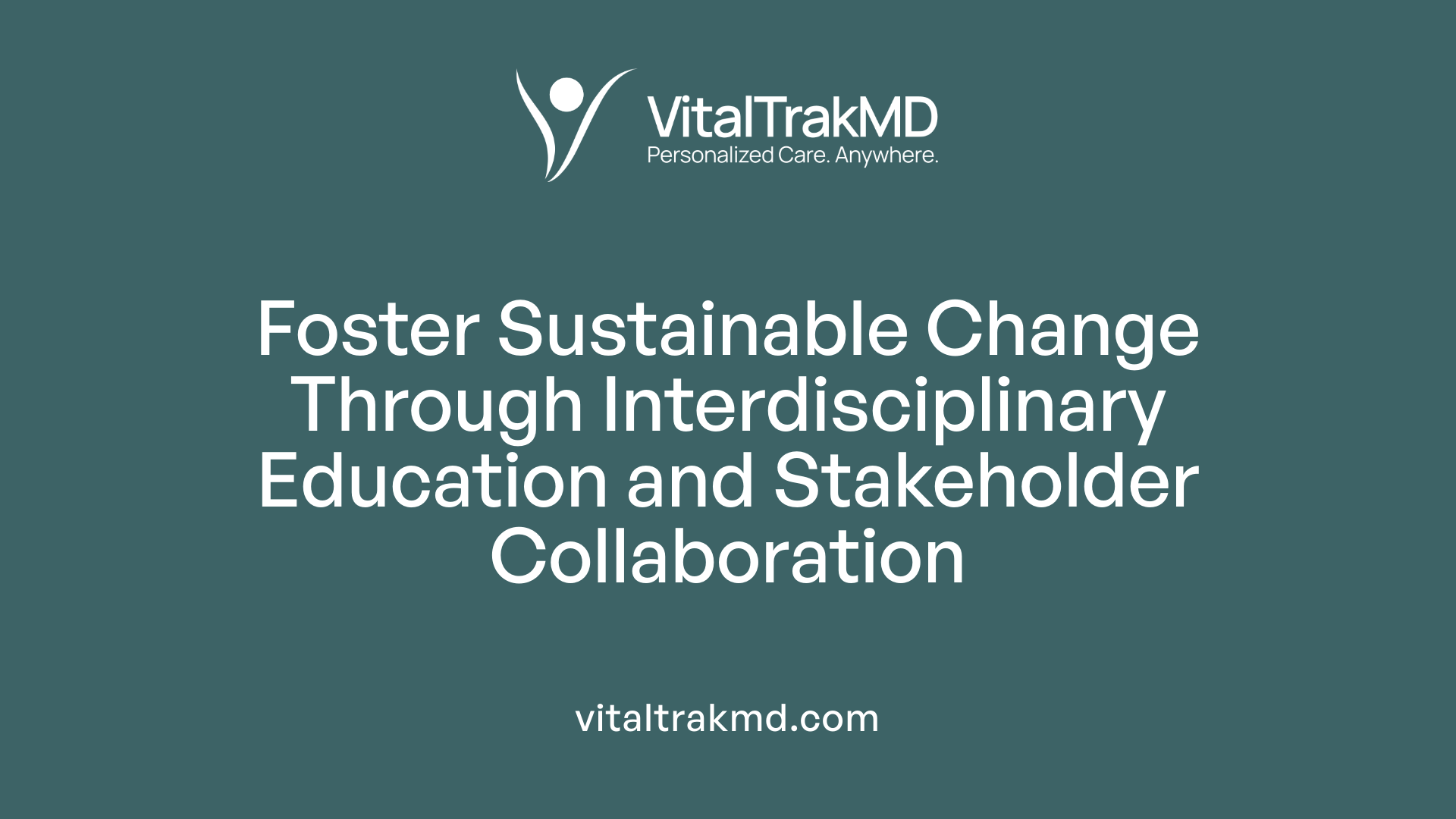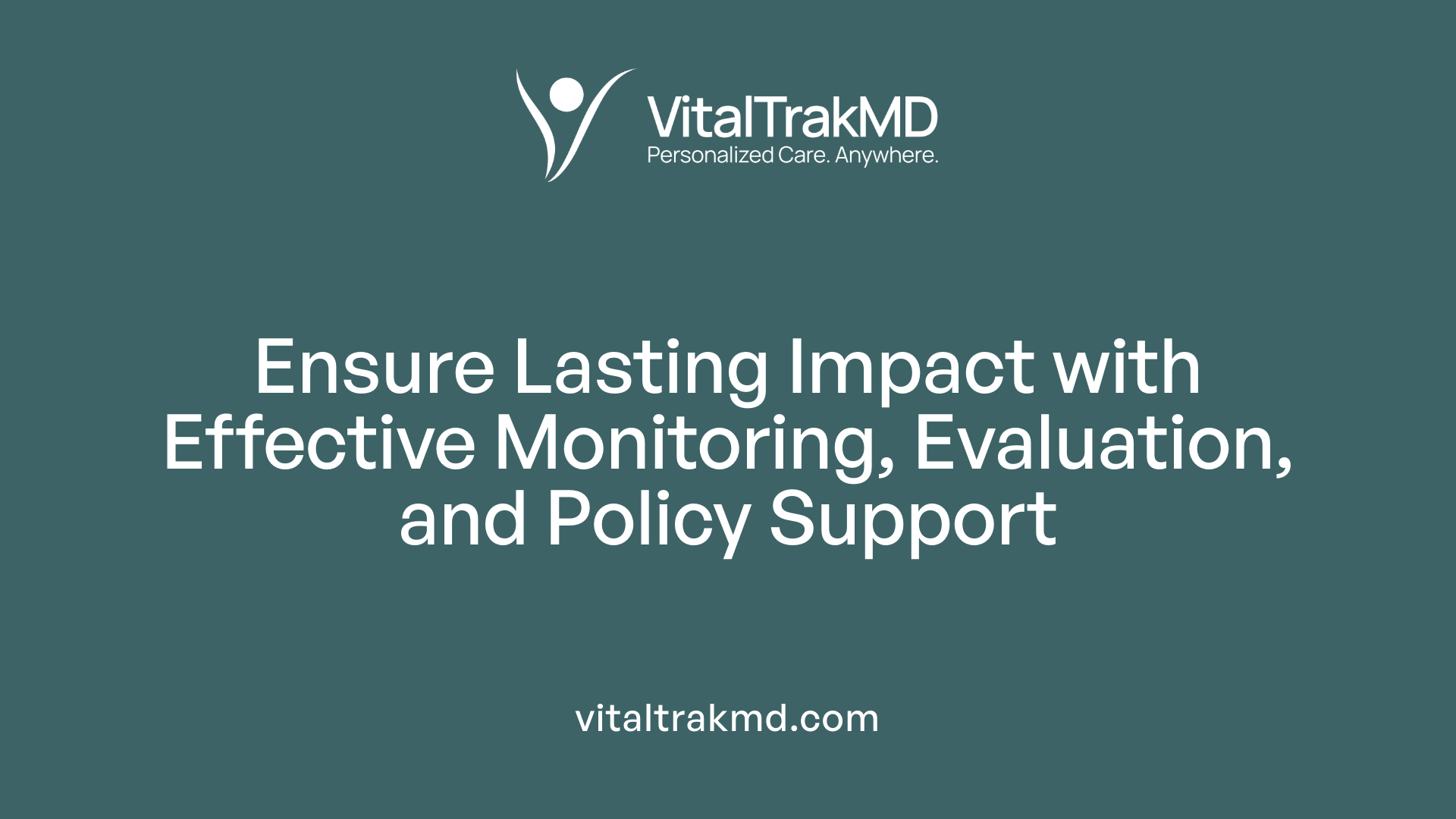Building Sustainable Nutrition Habits Through Hybrid Programs

Transforming Nutrition with Hybrid Strategies
In recent years, the landscape of sustainable nutrition has evolved rapidly, driven by advances in science, technology, and systems thinking. Hybrid programs—a blend of behavioral, educational, and technological approaches—are at the forefront of promoting lasting healthy eating habits that are environmentally responsible. This article explores the multifaceted strategies, scientific evidence, policy considerations, and innovative practices shaping the future of sustainable nutrition, emphasizing the critical role of interdisciplinary frameworks and stakeholder engagement.
Understanding Hybrid Programs for Sustainable Nutrition

What are hybrid programs for promoting sustainable nutrition habits?
Hybrid programs aim to advance sustainable nutrition by combining multiple strategies such as behavior change, education, and innovative food technology. These initiatives focus on encouraging healthier and environmentally friendly eating habits through a variety of methods.
Components involved in hybrid approaches
A typical hybrid approach integrates several elements:
- Behavioral Strategies: Educational campaigns and motivational tools that foster awareness and encourage healthier choices.
- Product Innovation: Development of hybrid food items that blend plant-based ingredients with traditional animal-based products or cultivated meats.
- Marketing and Communication: Campaigns emphasizing the environmental and animal welfare benefits of hybrid foods.
- Technological Advancements: Use of digital tools and scientific research to improve the taste, safety, and costs of blended foods.
These components work together to make sustainable foods more appealing and accessible.
Examples of hybrid product development
Some successful examples include:
| Product Type | Composition | Benefits | Additional Notes |
|---|---|---|---|
| Plant-and-meat blends | 25-50% plant ingredients mixed with cultivated or traditional meat | Reduced environmental impact, improved nutrition | Focused on taste, cost, and consumer acceptance |
| Meat-alternative hybrids | Hybrid burgers or sausages combining plant proteins with small amounts of animal protein | Lower greenhouse gas emissions | Marketed for flavor and sustainability |
| Dairy-and-plant hybrids | Yogurts or cheeses with plant-based components | Enhanced nutritional profiles | Catering to dietary preferences and sustainability concerns |
These innovations demonstrate how combining traditional and plant-based ingredients can promote healthier, more sustainable diets while satisfying consumer tastes.
Systems Thinking and Interdisciplinary Frameworks in Nutrition Science

What is the role of systems thinking in nutrition?
Systems thinking in nutrition emphasizes understanding the complex interconnections between food, environment, culture, and health. It advocates for a holistic approach that considers how various factors interact within food systems. This perspective helps identify leverage points for effective interventions, aiming to promote sustainable diets that are both healthful and environmentally friendly. By viewing nutrition as part of a larger system, researchers and policymakers can develop strategies that address underlying causes of poor dietary habits rather than just symptoms.
How do interdisciplinary approaches and big data enhance food science?
Interdisciplinary approaches bring together expertise from fields such as biology, environmental science, economics, and behavioral psychology. This collaboration fosters innovative solutions for sustainable nutrition, encompassing food production, safety, and consumption.
Big data plays a crucial role in this integration. It allows for the analysis of vast datasets—from nutrigenomics to consumer behavior—providing insights that guide personalized nutrition plans and policy development. The combination of diverse disciplines with big data analytics facilitates a comprehensive understanding of food systems, addressing issues like food security, diet quality, and environmental impact.
What is the impact of complex systems, AI, and machine learning in nutrition science?
Emerging technologies like artificial intelligence (AI) and machine learning are transforming nutrition research. Complex systems models simulate interactions in food environments, helping predict how dietary changes can influence health outcomes and ecological sustainability.
AI-based classification methods, such as hybrid machine learning strategies combining techniques like FHO-K-Means and EGBF, have proven reliable and accurate in assessing nutritional status, especially in areas lacking extensive resources. Hybrid nutrient profiling systems, like the balanced hybrid nutrient density score (bHNDS), show strong correlation with established dietary quality indices, improving diet assessment.
Personalized diet optimization models that leverage data-driven algorithms enable tailored recommendations that consider individual health needs and preferences. Furthermore, AI supports the development of hybrid food products, blending nutritional benefits with consumer acceptability, exemplified by plant-based meat alternatives. Overall, these technological advances foster more effective, scalable solutions for sustainable and healthy nutrition.
Innovations in Food Science and Environmental Impact
How can innovations in food science support sustainable nutrition habits?
Recent advancements in food science and technology are transforming the landscape of sustainable nutrition. Digital tools and artificial intelligence (AI) play a vital role in designing healthier and more sustainable food products. These innovations enable food scientists and manufacturers to analyze large datasets, understand consumer preferences, and optimize ingredients to reduce environmental impacts.
Emerging technologies such as precision agriculture, biotechnology, and gene editing are at the forefront of creating foods that are not only nutritious but also environmentally friendly. For example, alternative protein sources like cultured meat, insects, microalgae, and plant-based options are gaining popularity as sustainable solutions to meet growing global food demand.
The circular economy concept is increasingly incorporated into food production, emphasizing the valorization of food processing byproducts and reduction of food waste. This approach enhances resource efficiency and supports food security.
Innovative methods like 3D food printing allow for customized nutrition tailored to individual health needs, potentially reducing waste. Microencapsulation techniques help in preserving nutrients and controlling ingredient release, improving food quality and safety.
Personalized nutrition, driven by genomic and microbiome data, offers the possibility of tailoring diets that align with individual health profiles while minimizing environmental footprints.
Collaboration across the entire food supply chain—including farmers, manufacturers, policymakers, and consumers—is crucial for scaling these innovations. Supportive policies and ongoing research initiatives help accelerate adoption.
In conclusion, integrating innovations such as precision technology, sustainable farming practices, and personalized dietary approaches fosters the development of healthier, more sustainable eating habits worldwide. These strategies ensure that food systems become resilient, eco-friendly, and aligned with long-term health and environmental goals.
Multidisciplinary Education and Stakeholder Engagement in Nutrition Programs

How can educational programs be designed to effectively promote sustainable nutrition?
Effective educational initiatives in sustainable nutrition incorporate a systems thinking approach, such as the four-pillar evaluation framework. This method helps students grasp the intricate interplay between food, environmental impacts, cultural factors, and economic considerations.
To foster critical thinking and real-world problem-solving skills, programs should utilize experiential learning strategies. Case studies, hands-on activities, and practical projects enable learners to apply concepts actively and reflect on their roles within food systems.
Interdisciplinary approaches that blend science, social sciences, ethics, and cultural studies prepare students to view food choices holistically. Engaging diverse knowledge domains encourages innovative solutions and promotes understanding of local and global sustainability challenges.
Curriculum design should focus on co-creating adaptable learning objectives. Emphasizing teamwork, collective action, and advocacy prepares students to collaborate with various stakeholders and take an active role in driving change.
Aligning programs with established pedagogical frameworks, such as the Sustainable Food Systems (SFS) Signature Pedagogy, further equips learners with the systemic capabilities essential for careers in sustainable food development and policy.
Stakeholder involvement in sustainability
Involving a broad range of stakeholders—including policymakers, food industry players, researchers, and communities—is crucial for translating educational insights into tangible food system reforms. Accountability and transparency among these actors are vital for fostering trust and ensuring that sustainability goals are met.
Curriculum design and adaptive learning
Effective curricula are flexible and responsive to evolving scientific knowledge and societal needs. Integrating measurement tools like the Program Sustainability Assessment Tool (PSAT) and environmental observation methods ensures continuous improvement.
Long-term, adaptive learning models support sustained engagement and evolution of programs, especially when informed by participatory assessments involving educators, caregivers, and external experts. This collaborative approach enhances relevance and impact.
| Aspect | Focus Area | Details |
|---|---|---|
| Pedagogical Framework | Systems Thinking | Using evaluation models like the four-pillar approach |
| Learning Methods | Experiential Learning | Case studies, practical projects |
| Interdisciplinary Content | Holistic Perspective | Integrating science, culture, ethics |
| Stakeholder Engagement | Collaboration | Involving policymakers, industry, communities |
| Evaluation Tools | Monitoring & Improvement | PSAT, EPAO, fidelity assessments |
| Curricular Focus | Adaptability | Responsive, evolving content aligned with latest research |
By adopting such comprehensive strategies, educational programs can effectively nurture professionals and citizens capable of promoting sustained, equitable, and environmentally responsible nutrition practices.
Behavioral Change Techniques for Long-Term Habits
 Developing sustainable healthy eating habits hinges on effective behavioral change strategies that empower individuals and adapt to their personal contexts. Among the most impactful techniques are goal setting and self-monitoring.
Developing sustainable healthy eating habits hinges on effective behavioral change strategies that empower individuals and adapt to their personal contexts. Among the most impactful techniques are goal setting and self-monitoring.
Goal setting provides clear targets that motivate participants to achieve specific dietary improvements. When combined with self-monitoring—such as food diaries or digital tracking apps—individuals gain insight into their eating patterns, which fosters reflection and encourages ongoing adjustments.
Motivational interviewing and patient-centered approaches are vital for supporting intrinsic motivation. These strategies involve open-ended questions, value clarification, and exploring personal reasons for change, thereby cultivating a sense of autonomy and competence. Such methods align with self-determination theory, emphasizing that people are more likely to sustain healthy behaviors when they feel empowered and connected to their goals.
Environmental cues and digital interventions also play a critical role. Simple cues, like visual reminders or strategic placement of healthy foods, can prompt better choices. Digital tools—including mobile apps and online coaching—offer additional support by providing reminders, feedback, and personalized guidance.
A combination of these techniques creates a supportive environment where long-term adherence is achievable. Establishing new routines gradually—rather than aiming for rapid transformation—helps embed healthier habits. Involving social support, whether from family, partners, or health professionals, strengthens motivation and accountability.
Flexibility in strategy application, known as permissive flexibility, allows individuals to adapt plans based on changing circumstances without feeling discouraged. This adaptability, coupled with continuous support, helps sustain positive dietary behaviors.
In summary, the most effective long-term behavior change techniques include goal setting, self-monitoring, motivational interviewing, environmental cues, and digital interventions. Together, they foster autonomy, reinforce positive habits, and create adaptable, supportive pathways for enduring healthy eating.
The Role of Lifestyle and Personalized Nutrition Plans
What strategies and frameworks are effective in building sustainable nutrition behaviors?
Developing lasting healthy eating patterns relies on a combination of personalized, culturally sensitive counseling and evidence-based frameworks. Tailoring nutrition guidance to individual preferences and cultural contexts enhances motivation and adherence, making behavior change more achievable.
Behavioral change models, such as goal setting and motivational interviewing, empower individuals to adopt healthier habits. Educational interventions that increase awareness of nutrition benefits, aligned with their cultural food practices, foster a sense of ownership and commitment.
Creating supportive environments through policy actions is essential. Implementing food service guidelines, promoting access to healthy foods, and reducing availability of sugary drinks and fast foods create systemic change that benefits communities at large.
A focus on sustainable diets—considering health, environmental impact, and social acceptability—guides long-term success. Principles from organizations like WHO and FAO encourage integrating these aspects into policies and practices.
Multidisciplinary strategies that include lifestyle medicine principles, continuous monitoring, and community involvement bolster efforts to establish enduring healthy behaviors. Combining these elements with environmental considerations ensures that dietary changes support both individual health and planetary well-being.
Teaching healthy eating pillars
Educational programs often center on core pillars such as balanced nutrition, mindful eating, and the importance of variety. These pillars help individuals understand how to make choices aligned with long-term health goals.
The six pillars of lifestyle medicine—covering nutrition, physical activity, stress management, sleep, social connection, and avoidance of risky substances—are integral to creating personalized plans. Harvard Medical School's curriculum exemplifies this approach, emphasizing the significance of a holistic lifestyle.
In taught modules, participants learn about healthy eating patterns across life stages, the nutritional needs of diverse populations, and strategies for behavioral change. This comprehensive understanding supports the adoption of sustainable dietary habits.
By integrating these pillars into personalized nutrition plans, individuals can develop strategies that are both scientifically sound and tailored to their unique life contexts, fostering sustainable behavior change.
Monitoring, Evaluation, and Policy Integration for Sustainability

What factors affect the long-term sustainment of healthy eating interventions?
Long-term success of nutrition programs relies on numerous elements. External factors such as alignment with organizational goals, supportive policies, and strong partnerships with local agencies help embed programs into community and institutional routines. Consistent funding and adaptable program designs are crucial, allowing interventions to adjust to changing contexts.
Program characteristics, including how they are delivered, their duration, and interactivity, influence sustainability. Initiatives that are longer in duration and involve active participant engagement tend to be more enduring. Community involvement and political backing further support long-term implementation.
The complexity of sustainment is also shaped by external stability. When community support and government support are solid, programs are more likely to thrive; instability can prompt early discontinuation. Ultimately, sustaining health and nutrition interventions requires a dynamic approach that considers environmental, organizational, and interpersonal factors.
Measurement tools and indicators
Effective assessment of nutrition program sustainability involves various tools and indicators. The Program Sustainability Assessment Tool (PSAT) is widely used to evaluate key domains such as environmental support, organizational capacity, program adaptation, and funding stability.
Environmental and Policy Assessment and Observation (EPAO) provides insights into the nutritional environment of childcare settings, measuring practice implementation and policy adherence. Fidelity assessments track how closely programs stick to their original design over time.
For a comprehensive view, combined metrics evaluate program reach, behavior change, and long-term health outcomes, considering local cultural and environmental contexts.
Program evaluation frameworks
The dynamic sustainability framework (DSF) guides the ongoing evaluation process. It emphasizes that adaptations and evolving contextual factors are natural and potentially beneficial, enhancing program fit and effectiveness.
Mixed-methods designs are standard, incorporating quantitative surveys to gauge sustainability levels and qualitative site visits to explore contextual influences. Using these approaches helps identify barriers and facilitators at different ecological levels.
Stakeholder feedback from educators, caregivers, and policymakers informs the refinement of strategies, ensuring they remain relevant and effective.
Policy and system-level approaches
Achieving sustainable nutrition programs requires systemic change. Policies must be tailored to local contexts, considering cultural, geographic, and economic factors.
A food systems approach involves stakeholders across the entire supply chain, from producers to consumers, promoting transparency and accountability among governments, corporations, and citizens.
Accountability metrics should incorporate health, environmental, and sociocultural values, guiding policy decisions that support socially inclusive and environmentally sustainable diets. Public accountability and stakeholder engagement are vital to driving long-term transformation toward healthier and more sustainable food environments.
Integrated Food System Approaches for Holistic Nutrition
How does food system integration influence sustainable nutrition?
Adopting a food systems approach means recognizing the complex, interconnected pathways through which food is produced, processed, distributed, consumed, and waste is managed. Systems thinking emphasizes that individual dietary choices are shaped by multiple layers of influence, including environmental impacts, economic factors, cultural practices, and policy frameworks.
This holistic perspective promotes collaboration across sectors—agriculture, public health, environmental management, and social services—encouraging innovative solutions that are sustainable, scalable, and culturally appropriate. Such integration helps identify leverage points to improve overall food quality and safety while reducing environmental footprints.
What role do environmental, social, and cultural factors play?
Environmental concerns, such as greenhouse gas emissions and biodiversity loss, are central to designing sustainable diets. Policies and practices must prioritize resource-efficient production and eco-friendly technologies. The social dimension involves addressing inequalities and ensuring that diverse populations have access to nutritious, culturally relevant foods.
Cultural factors influence dietary habits deeply, often shaping food preferences and meal patterns rooted in traditions and local identities. Policies should respect and incorporate these cultural practices to promote acceptance and adherence to sustainable diets.
How important is stakeholder accountability and transparency?
Effective transformation of food systems hinges on accountability from all actors—governments, corporations, farmers, retailers, and consumers. Transparency fosters trust and allows for better monitoring of sustainable practices. Public reporting, certification schemes, and stakeholder engagement are critical.
Accountability mechanisms ensure that commitments to sustainability are met and that actors are responsible for environmental and social impacts. Emphasizing social inclusiveness and equitable participation can drive collective action toward healthier and more sustainable food systems.
| Aspect | Focus Areas | Stakeholder Roles |
|---|---|---|
| Policy | Subsidies, taxes, regulation | Governments, policymakers |
| Production | Green practices, biodiversity | Farmers, agribusinesses |
| Distribution | Ethical sourcing, traceability | Retailers, distributors |
| Consumption | Cultural relevance, education | Consumers, community groups |
| Waste management | Recycling, composting | Municipalities, waste services |
This integrated framework highlights the importance of multi-level policies that consider immediate and long-term effects, fostering a resilient, inclusive, and sustainable food environment.
Building a Future of Sustainable Nutrition
The integration of hybrid programs with systems thinking, scientific innovation, education, and policy reforms offers a comprehensive pathway toward sustainable nutrition. By embracing multidisciplinary approaches and stakeholder engagement, society can foster healthier, environmentally responsible eating habits that are both adaptable and enduring. Through continued research, technological advancement, and policy-driven action, we can realize the goal of universal access to nutritious and sustainable diets, ensuring the well-being of future generations.
References
- Nurturing sustainable nutrition through innovations in food ...
- A mixed-methods protocol for identifying successful ...
- Health and Wellness: Designing a Sustainable Nutrition Plan
- Toward healthy and sustainable diets for the 21st century
- Teaching nutrition and sustainable food systems
- Co-design of Adaptable Learning Outcomes for ...
- Hybrid products to optimize nutrition, taste, cost, and ...
- Hybrid food products: Bridging sustainable food and taste
- Exploring the long-term sustainability of school-based ...
- Exploring the long‐term sustainability of school‐based ...
Recent articles
Want to Feel Better and Live Healthier?
Join hundreds of patients taking control of their health with personalized care that fits their life – not the other way around.
Rated 4.8/5 by 32+ customers







